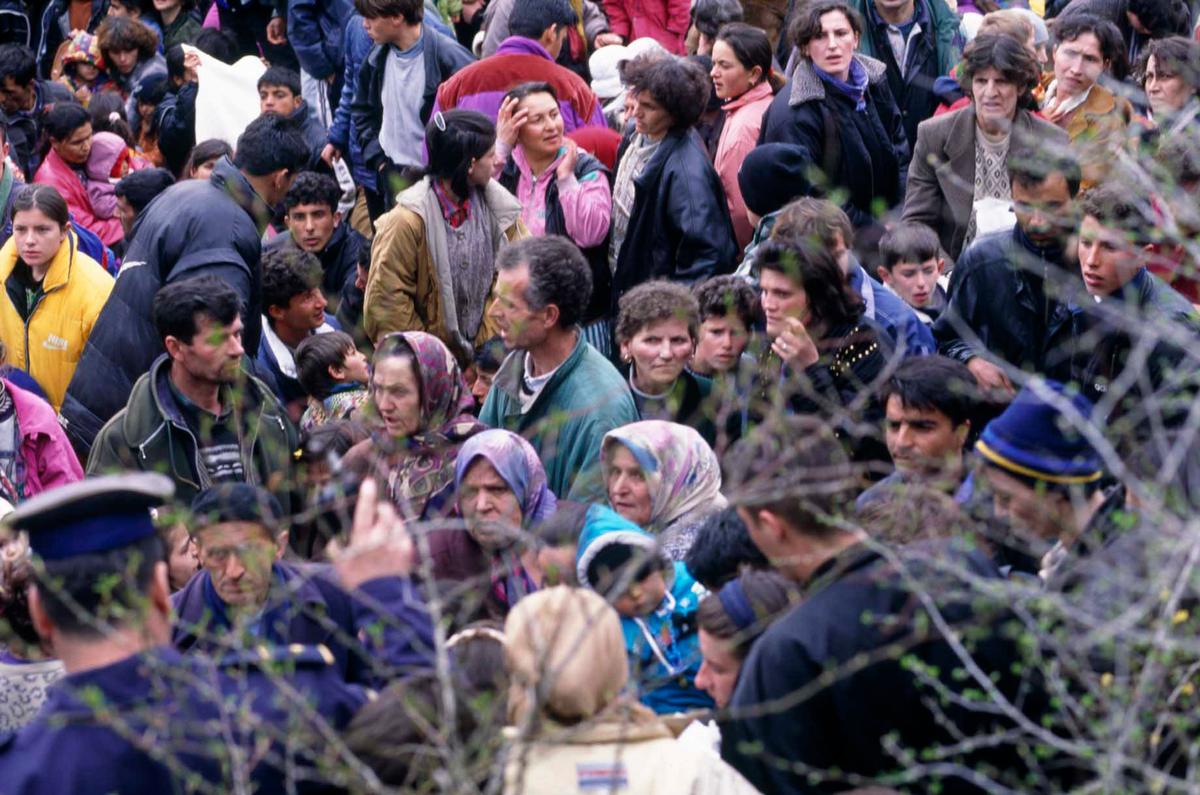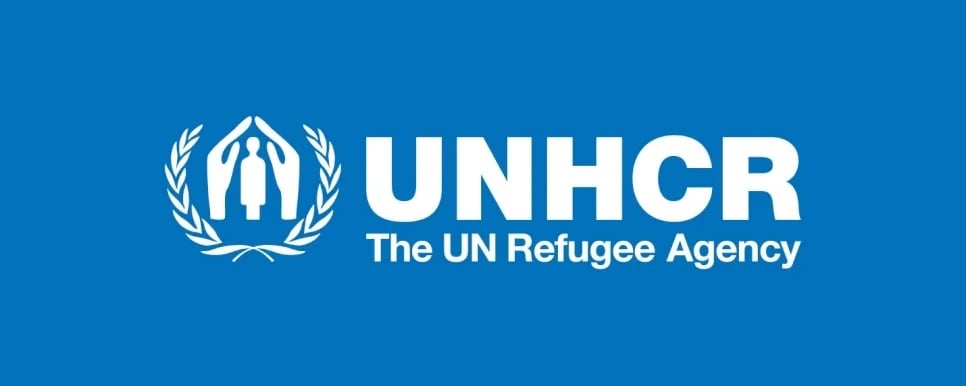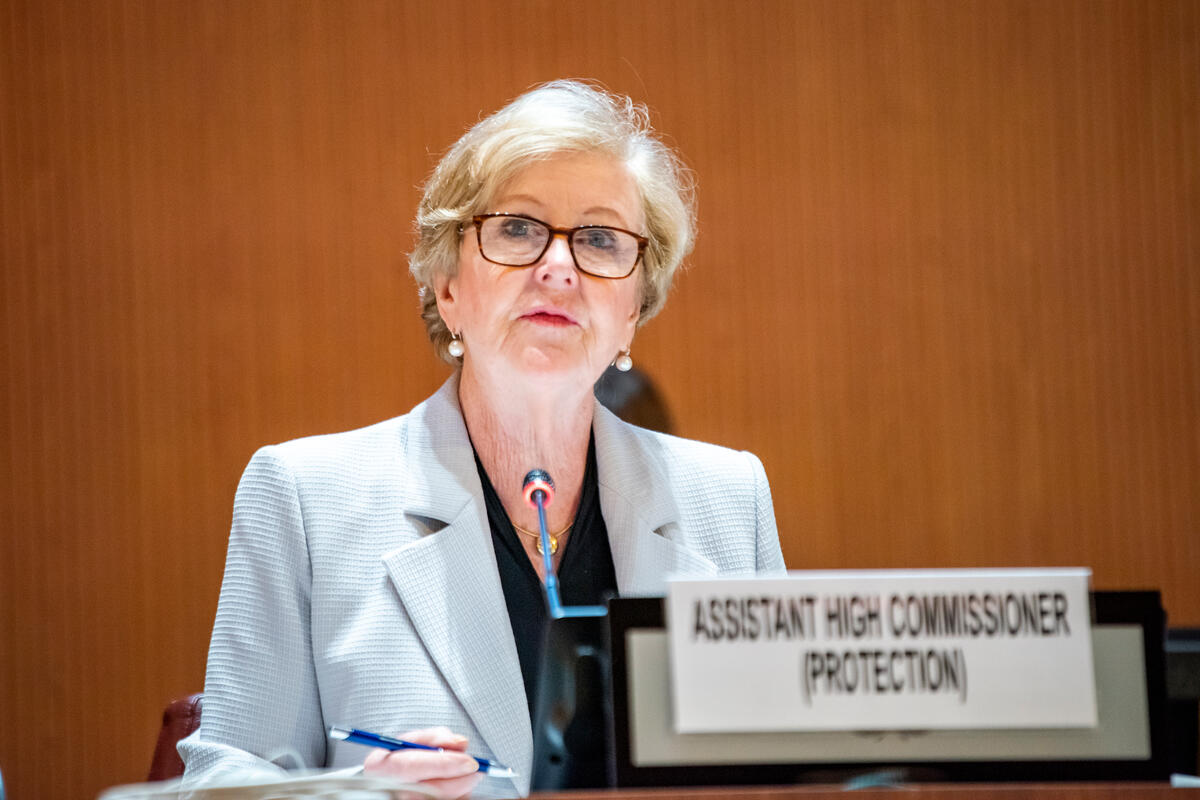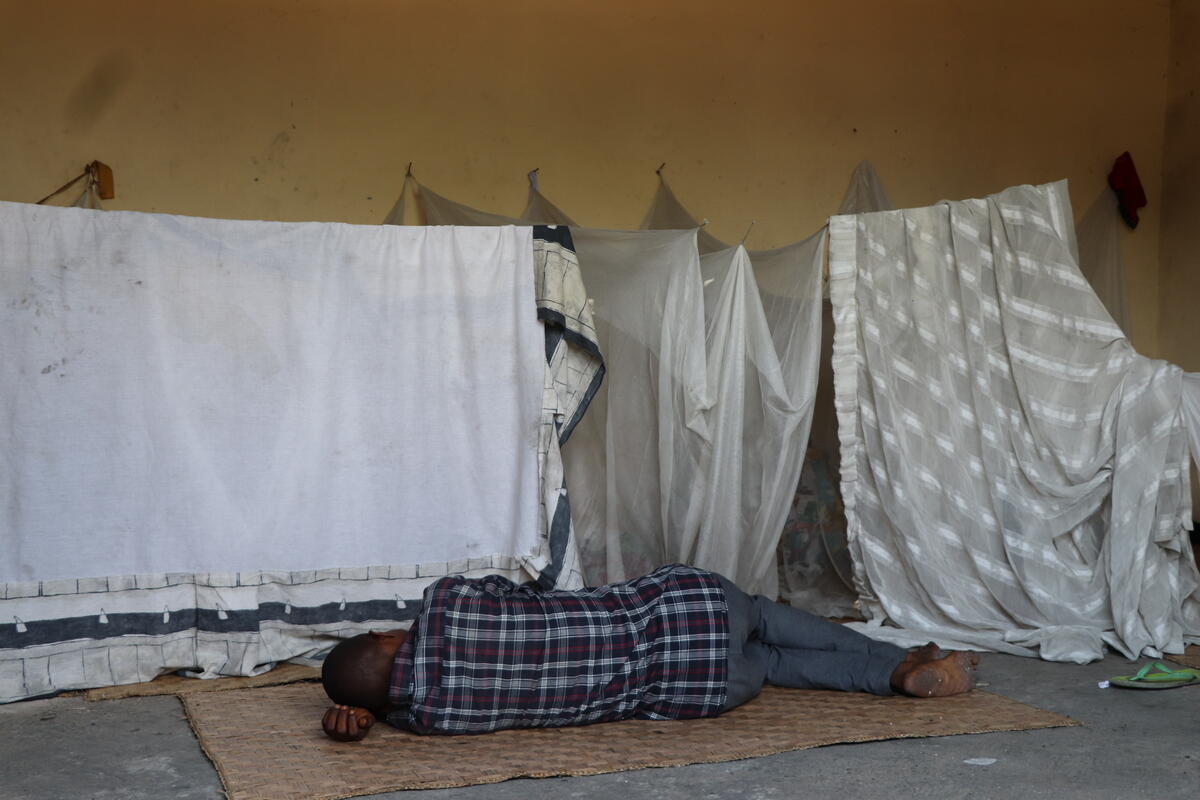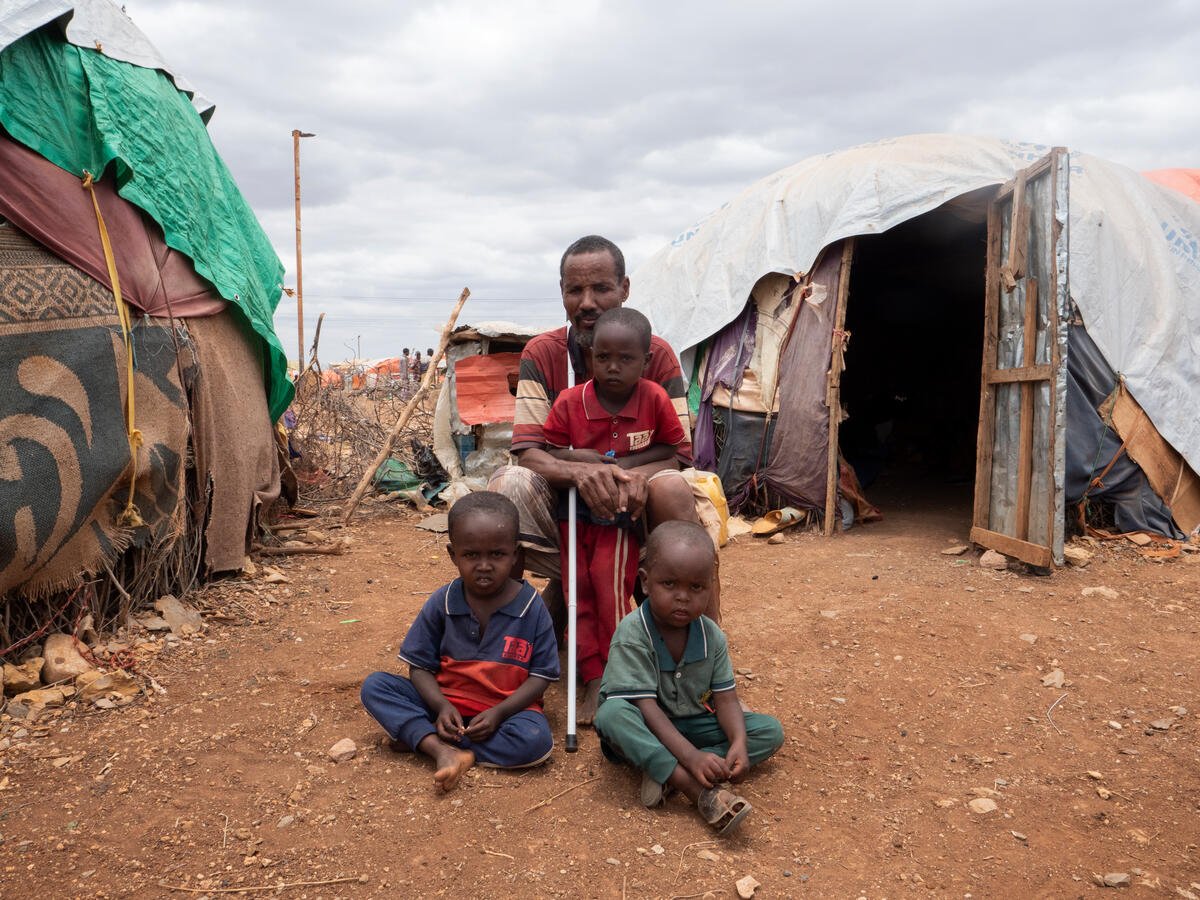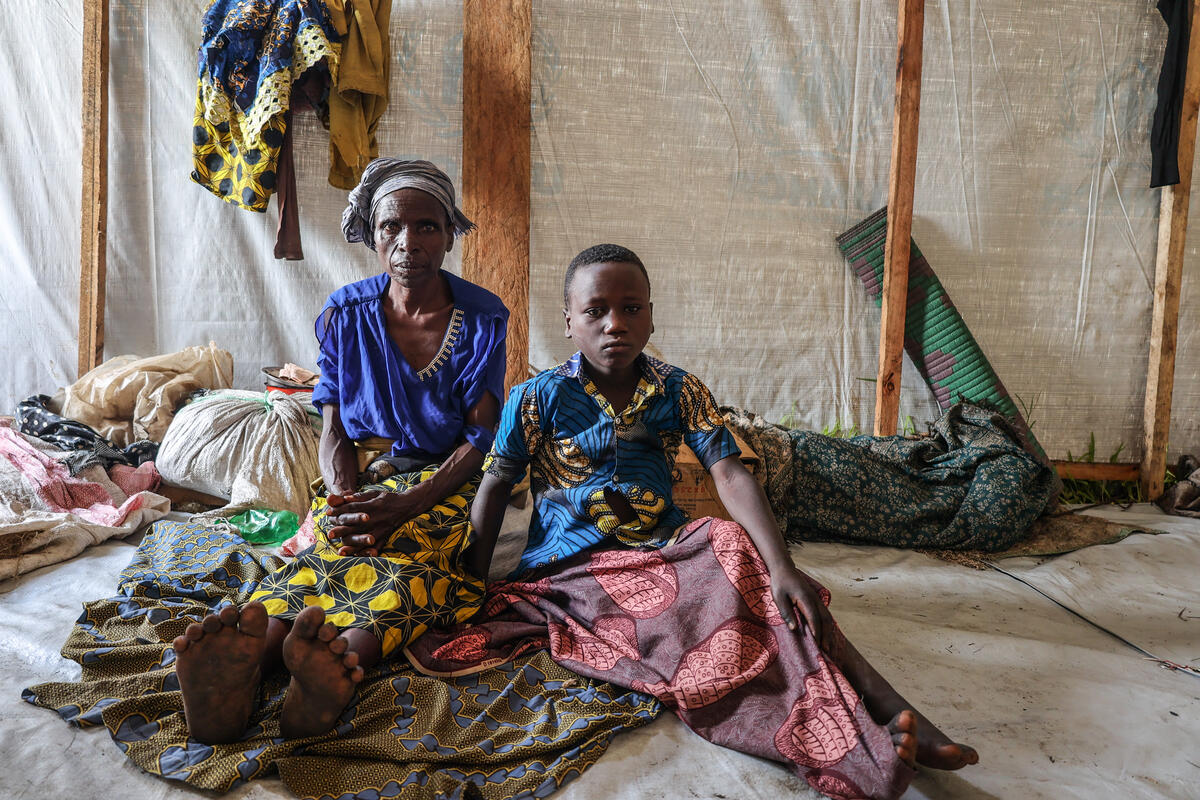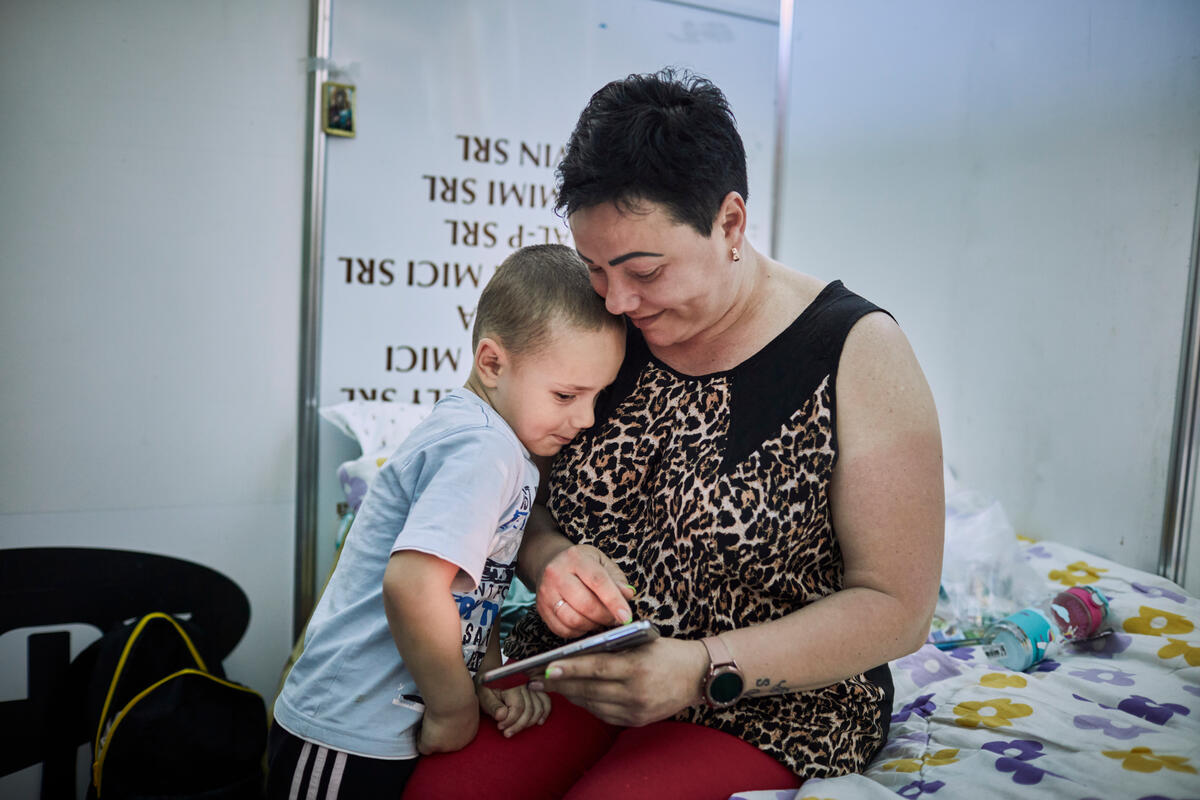Looking for lessons among past refugee crises
Looking for lessons among past refugee crises

GENEVA – Paramilitaries came to Emin Voca’s home in Kosovo* one spring evening and gave his father a stark warning to get out.
“They told him: ‘You must go tomorrow morning; otherwise you will be killed.’ We were scared,” recalls Voca, who was just 10 years old and in primary school in their hometown of Mitrovica at the time.
Packed into buses, the family found themselves in snaking lines of civilians fleeing on foot and in cars and trucks, approaching the southern border in a desperate bid to escape the Kosovo* conflict in April 1999.
After a tense standoff at a border town, Voca, his parents and sister were allowed to cross into the former Yugoslav Republic of Macedonia, where they spent a month living under canvas in Stenkovec II camp, several kilometres from Skopje.
Voca and his family were eventually sent to Italy under the so-called Humanitarian Evacuation Programme, or HEP. This programme saw the international community come together to share the responsibility for caring for tens of thousands of Kosovars who had sought refuge in former Yugoslav Republic of Macedonia, which had agreed to admit refugees on the understanding that some would be evacuated to third countries.
“They gave us clothes, food and the most important thing we were safe,” says Voca, now 28, of the respite the family received in Comiso, Sicily. “My family was very thankful to the international community for this.”
HEP temporarily relocated some 96,000 Kosovars to 29 countries around the world for their safety. It is one of the past examples of responsibility sharing being examined at a conference in Geneva on Monday (July 10).
The one-day gathering of government officials, international organizations, NGOs, academics and other experts, is the first of five thematic discussions to be held, as UNHCR, the UN Refugee Agency, leads a process to develop a global compact on refugees.
The High Commissioner for Refugees was given that task in last year’s historic New York Declaration for Refugees and Migrants by the UN General Assembly.
“As we face record global displacement, it is salutary to remember occasions in the not too distant past when the international community came together and found life-saving solutions to seemingly intractable refugee situations,” said Volker Türk, UNHCR’s Assistant High Commissioner for Protection. “We have done it before, we can do it now.”
A peaceful homecoming in Central America
The HEP programme is but one example of such cooperation. In Central America, an accord in the late 1980s enabled hundreds of thousands of people uprooted by interlinked conflicts in El Salvador, Nicaragua and Guatemala to find long-term solutions.
It helped some to integrate in the countries where they had sought refuge, others to be resettled to third countries and 134,000 to ultimately return to their place of origin – among them a Poptí Mayan indigenous woman named Eulalia Elena Silvestre Hernandez.
At the height of Guatemala’s vicious civil war in 1982, when she was just seven, Silvestre fled a rural community in north-east Guatemala after soldiers spattered local houses with gasoline and burned them down as residents slept. From one household, just a baby and two adults survived.
Unharmed but fearful for their lives, Silvestre and her family spent the next 13 years in Mexico. But support from the International Conference on Central American Refugees, or CIREFCA for its acronym in Spanish, enabled them to return to Guatemala in 1995.
“Organizing ourselves for the return allowed us to achieve things,” said Silvestre, now a 45-year-old community activist in Petén, who has been able to resume farming. “Now we have a bit of land. I think most of the women, at least in our family, have a little bit of land.”
CIREFCA illustrated the strong link between peace and development by supporting large infrastructure and small community development projects, helping to build confidence among refugees ready to return home.
Shoring up protection for Vietnamese refugees
Half a world away in Southeast Asia, a similar collaborative effort to manage a surge in boat arrivals from Indo-China in the late 1980s was key to unlocking an impasse which threatened the lives of thousands.
Faced with a swelling number of arrivals and growing reluctance from western governments to maintain resettlement opportunities, governments in the region threatened pushbacks. In response, the multilateral Comprehensive Plan of Action (CPA) was signed in 1989, bringing together commitments made by countries of origin, asylum and resettlement.
It included a programme to provide safe, orderly ways for people to leave legally, temporary protection for new arrivals in South-East Asia and resettlement in third countries for refugees. Those found not to be refugees were helped with counselling and economic assistance for their reintegration in countries of origin.
Saigon-trained architect Thanh Dang was among 63 people who packed onto a boat to leave Viet Nam in June 1989. After a week at sea, the crowded vessel reached Indonesia, where Dang ended up in the Galang refugee camp. Under the CPA, he was ‘screened in’ as a refugee and subsequently resettled to the United States, where he became an architectural designer working on schools and medical facilities in Atlanta, Georgia.
Looking back on the life that the programme gave him, he makes an impassioned plea to the international community and ordinary citizens grappling with today’s multiple refugee crises.
“Put yourself in the refugee’s position. They are just normal people. I don’t think anybody wants to uproot their lives and face an uncertain future if they don’t have to,” he said.
“If you give them a chance to rebuild their lives, refugees will contribute to society where they live. Please don’t be afraid of them, and welcome them.”
Reporting by Shpend Halili in Kosovo*, Lucrecia Maza in Guatemala and Ariane Rummery in Geneva
* Security Council Resolution 1244 (1999)
Further information: Sharing responsibilities for large refugee movements and Towards a global compact on refugees




